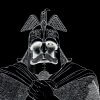Initiation—an evocative term that conjures images of secret rites and profound transformations—has intrigued anthropologists and scholars of religion for generations. As Joseph Henderson wisely noted in his seminal work, Thresholds of Initiation, “Initiation more than any other body of knowledge has suffered throughout history from the fate of continually being forgotten and having to be rediscovered” (Henderson 2005: 1).
In 1909, a remarkable resurgence of interest in initiation rites occurred, thanks to Arnold Van Gennep of the Ecole Sociologique in Paris. His classic, Les Rites de passage, shed light on how these rituals guide young boys through life’s pivotal transitions. Van Gennep identified three crucial phases: the rite of separation, the rite of transition, and the rite of incorporation. Not only did he observe these rites among boys, but he also noted the significant ceremonies that transform girls into women, beginning with early menstrual rites and culminating in the marriage ritual. Van Gennep’s work, along with Emile Durkheim’s influence, underscored the idea that these rites stem from mankind’s innate experience of group identity, or “collective representations.”
Bridging Sociological and Psychological Perspectives
Around the same time in England, Jane Ellen Harrison, a scholar of ancient Greek religion, embarked on her own exploration of initiation. Through her psychological lens, she added depth to the sociological perspectives of her French counterparts. Harrison’s discovery of the “Hymn to the Kouretes” from Crete, detailing a ritual dance for Zeus’s protection, illustrated the shift from the Mother Goddess religion to that of the Father. Her insights bridged the sociological views of initiation with the nascent theories of the unconscious, setting the stage for psychoanalytical interpretations.
Freud, Jung, and the Psychoanalytical Perspective
Sigmund Freud and Carl Jung, the titans of psychoanalysis, delved into initiation symbolism in their groundbreaking works of 1912. Freud’s Totem and Taboo and Jung’s Symbols of Transformation both drew parallels between the rituals of primitive societies and the fantasy material of modern individuals. While Freud viewed these symbols as pathological relics, Jung saw them as archetypal patterns essential to personal and cultural development. Their divergent interpretations led to the formation of separate schools of depth psychology, each with its own take on the significance of initiation.
The Collective Unconscious and Initiation Symbols
Jung, in his Two Essays on Analytical Psychology, emphasized that initiation symbols are profoundly influential, whether or not they are objective truths. He argued that these unconscious contents, equivalent to initiation practices, shape the human psyche regardless of their desirability. Jung’s concept of the collective unconscious introduced an inner psychological structure to the initiation experience, blending the personal and the cultural.
Joseph Henderson and the Modern Study of Initiation
Building on Jung’s foundations, Joseph Henderson devoted his career to the study of initiation. His works, including “Ancient Myths and Modern Man” in Man and His Symbols, The Wisdom of the Serpent, and Thresholds of Initiation, explore how initiation symbolism manifests in modern individuals’ dreams. Henderson expanded Van Gennep’s model, introducing stages such as the “ordeal” and the “trial of strength,” which often involve painful and transformative experiences. Anthropologist Victor Turner’s concept of “liminality” aptly describes these stages, emphasizing the profound, yet often imperceptible, changes occurring at the boundaries of everyday life.
Henderson’s clinical practice revealed that the archetype of initiation frequently appears in dreams, guiding individuals through transformative life phases. His theoretical model highlights the necessity of reconciling inner unconscious images with outer social forms, a process that can lead to a profound personal transformation. For many, this journey involves navigating the complex interplay between individual and collective experiences, often resulting in a deeper understanding of one’s place in the world.
The Timeless Relevance of Initiation
The study of initiation, from Van Gennep’s early 20th-century rediscovery to Henderson’s modern psychological interpretations, reveals a timeless and universal process of transformation. As we continue to explore these ancient rites and their modern manifestations, we uncover the enduring power of initiation to shape our lives and our cultures, proving that this enigmatic journey remains as relevant today as it was for our ancestors.
Dive deeper into the world of initiation and explore its rich history and profound impact on modern psychology with “Initiation: The Living Reality of an Archetype“. Discover how these ancient rites continue to shape our collective and individual psyches, offering insights into the mysteries of human transformation.





